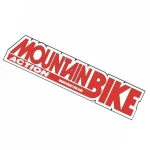WEAR AND TEAR: WHEN YOU SHOULD REPLACE YOUR MOUNTAIN BIKE TIRES AND WHY
Don't neglect your only connection to the ground
WEAR AND TEAR: TIRES

LIFESPAN
There’s no good rule of thumb for how long your tires should last. Some riders may get a couple of years out of their stock rubber, while others may burn through multiple sets of new tires in a summer bike-park season. Where and how much you ride determines this, but learning to read the wear pattern on your tires will ensure that you’re not only getting the most mileage but also the most grip from them.
Average tire life seems to range from a few hundred miles for the softest of race tires to a couple thousand from a dry-compound XC tire in ideal conditions. Tires will go through a few phases as they age.

As a tire wears, the little rubber nipples will fall off. If you still have these on your tire, they’re likely relatively fresh. As the virgin surface burns off, the tires should come to full grip as they break in. With the cornering knobs sharp and fresh, the handling of the bike will be at its absolute best.
SETUP
After a few hundred miles, a tire will begin to show signs of wear but should still have sharp edges on most of the knobs. If your cornering knobs still look like they haven’t touched the dirt, you may want to decrease pressure to allow the tire carcass to conform to the ground better. Conversely, if your knobs look like they’ve taken a lot of abuse, you may be using a rubber compound that’s too soft for your conditions or your tire may be under-inflated. Either way, it’s a good reason to try a different setup.

END IS NEAR
After about 500–1000 miles, there will be enough wear that your grip is diminished, especially when cornering and in loose or steep terrain. While tires can be pushed past this wear level, many riders opt to simply replace at this point. Old tires are more vulnerable to punctures. Moreover, if you’ve plugged a tire to repair a puncture, it’s not worth the increased risk of failure on a future ride.
Only our absolute favorite tires, ones that have survived our marginal line choices and somehow avoided enough of the sharp rocks to still hold air reliably, are pushed past what we would call the 50-percent wear mark. Beyond this, stretching the life of a tire becomes a balance between thriftiness and performance, and ultimately a gamble on safety and reliability. We’ve been on the losing end of this with both flat tires that left us far from home and crashes that came unexpectedly from a loss of grip. We recommend replacing worn tires before they’re down to the threads.




